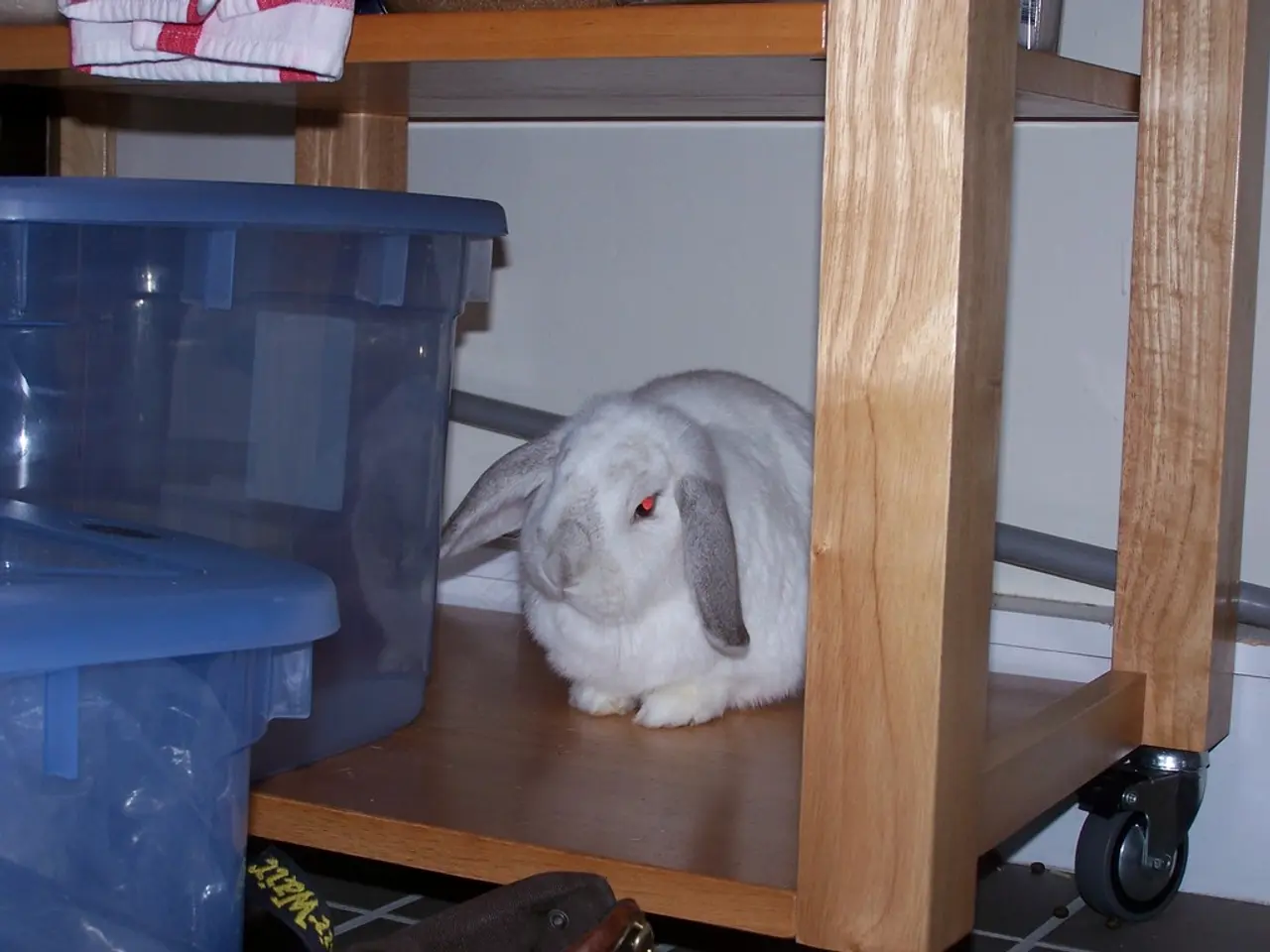Rabbit House Training Methods Unveiled by Veterinarian, Consisting of Five Simple Steps!
House Training Your Indoor Rabbit: A Comprehensive Guide
Rabbits can make wonderful indoor pets, but house training them is an essential step to ensure a harmonious living environment. Here's a guide to help you choose the best indoor rabbit hutch, litter box, and litter for a smooth house training experience.
Indoor Rabbit Hutch
For a spacious, easy-to-clean, and non-toxic environment that promotes bunny welfare, consider multi-level or modular C&C (Cubes & Coroplast) cages. These cages offer grids and sturdy plastic bases to protect delicate paws, and a side door for easy access. Avoid small traditional wooden hutches indoors as they can be too confined and hard to clean for a pet rabbit's long-term housing needs.
Litter Box
Choose a simple, functional litter box that fits your rabbit comfortably. Plastic cat litter trays, including hooded ones, work well. For older or disabled rabbits, shallow trays like baking trays or document trays can ease entry. Automatic litter trays are not suitable for rabbits.
Litter
Select natural, biodegradable, and safe litters since rabbits tend to nibble the litter. Paper-based, tofu-based, wood, bamboo, or hemp litters are recommended. Avoid clay, pine, cedar, or crystal litters as these can be harmful or toxic to rabbits.
Additional Tips
- Place Timothy hay inside or near the litter box area as rabbits like to munch while using the box — this encourages litter box use.
- Place multiple litter boxes if your rabbit has more than one favorite spot to speed training.
- Set litter boxes in quiet, low-traffic areas to encourage use and reduce stress.
The House Training Process
The process of house training a rabbit is straightforward and consists of five simple steps:
- Confine the rabbit to one area and allow them time to familiarize themselves with the litter box.
- Once the rabbit understands the concept of the litter box, more space can be given by adding in more litter boxes around the house.
- Bunny proof a room before letting the rabbit loose to ensure their safety and to keep cables and clothing from being chewed.
- Avoid a saturated litter box during training.
- If a rabbit is still having toileting accidents, it may need to be taken a few steps back in its training.
Common Challenges
- A small or difficult-to-access litter box can deter a rabbit from using it.
- Scent-marking or incomplete house training could cause a rabbit to toilet inappropriately.
- It's important to keep the rest of the enclosure clean to encourage the rabbit to use the litter box.
- Rabbits learn to use the litter box within a few days to a few weeks.
- If a rabbit is still having toileting accidents, it's important to get the rabbit checked over by a vet, in case there is an underlying health issue causing the problem.
Conclusion
Investing in a large, durable, and easy-to-clean litter box is the first step in the house training process for rabbits. This setup promotes easy house training by combining comfort, safety, and hygiene tailored to a rabbit’s behavior and needs. With patience, consistency, and the right tools, you can successfully house train your indoor rabbit.
- Caring for a pet rabbit includes house training, which is crucial for maintaining a harmonious living environment.
- When choosing a pet rabbit hutch, consider multi-level or modular C&C cages for a spacious, easy-to-clean, and non-toxic environment.
- For a functional litter box, plastic cat litter trays, including hooded ones, are suitable options, while shallow trays can benefit older or disabled rabbits.
- Selecting safe and natural litters, such as paper-based, tofu-based, wood, bamboo, or hemp, helps prevent harm to rabbits who tend to nibble on litter.
- Additional tips for house training include placing Timothy hay near the litter box, providing multiple litter boxes, and keeping litter boxes in quiet areas.
- The house training process involves confining the rabbit, allowing it to understand the litter box, gradually expanding its space, bunny-proofing a room, and addressing accidents promptly.
- Common challenges in house training include a difficult-to-reach litter box, scent-marking, incomplete training, and underlying health issues causing toileting accidents.
- Investing in a large, durable, and easy-to-clean litter box is the first step in the house training process, promoting comfort, safety, and hygiene for rabbits.
- With patience, consistency, and the right tools, you can successfully house train your indoor rabbit, and enjoy its companionship in your lifestyle, whether at home, traveling, or shopping for pet accessories, food, fashion, and home decor.




